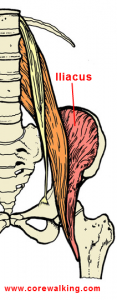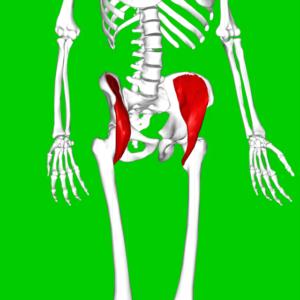 Releasing the energy stored in the iliopsoas is very important for many people in terms of recovering from injury and trauma of all kinds.
Releasing the energy stored in the iliopsoas is very important for many people in terms of recovering from injury and trauma of all kinds.
Often stretching these muscles can be counter-productive depending on the state of things.
But there should reach a point in the healing process where an iliacus stretch will serve you well.
The iliacus muscle is very often ignored due to its partner the psoas major.
These two muscles meet to form a common tendon attaching to the back of the inner thigh and therefore are referred to as the iliopsoas.
The iliacus performs similar functions as the psoas major (Flexing the leg forward when standing or walking, lifting the trunk from lying down) differs in that the psoas major crosses multiple joints while the iliacus is a one joint muscle and acts exclusively on the hip.
As is the case with numerous muscles in the deep core, trouble with one means trouble with others.
We will rarely have a psoas problem that doesn’t affect the iliacus, and in the same way issues with quadratus lumborum will almost always involve the psoas. Although I often discuss the muscles of the body in isolation, they rarely if ever, work that way.
 Iliacus issues tend to be the result of a sedentary lifestyle or excessive athletic training.
Iliacus issues tend to be the result of a sedentary lifestyle or excessive athletic training.
Poor sitting and standing posture and a lack of movement can lead to a short tight iliacus that throws everything around it into disarray.
When the iliacus and/or psoas major shorten or tighten the movement available around the hip socket decreases exponentially.
This inhibited movement in the hip can lead to other compensations along the chain of the body.
With every step we take there is reciprocal movement throughout the joints of the body.
If a tight iliopsoas restricts rotation in the hip, that movement will have to come from somewhere—most often in the lower back or the knee which can lead to further problems.
It serves anyone doing this stretch to obsess on alignment and move slowly through every phase of the pose.
Any psoas and iliacus stretch can be very sweet when done correctly.
Iliacus stretch:
- Starting on your hands and knees step one foot forward and place your hands on the front knee bending your elbows out to the side.
- Orient your trunk so that both the hips and shoulders are facing forward.
- Pay close attention to the inner thigh of the back leg trying to set it back while rotating it internally. This stretches both iliacus and psoas major.
- As the front knee comes forward it is very easy to lead with the front hip so do your best to move both sides of the pelvis together at the same pace.
- Tone the transverse abdominis of the lower belly which will free the iliacus to stretch more.
- To go deeper into the pose play with straightening the arms, extending the trunk from the back of the body as much as the front.
- You can also play with the alignment of the pelvis turning the hip of the back leg more forward than the hip of the front leg to turn up the volume a bit.
- Finally you can rotate the trunk to accentuate the pose in a number of ways.
Experiencing how each and every nuance of movement in this iliacus stretch affects the iliacus, psoas and the deep core is as much a part of the effort as the stretch itself.
The psoas and iliacus muscles are essential to good walking patterns.

